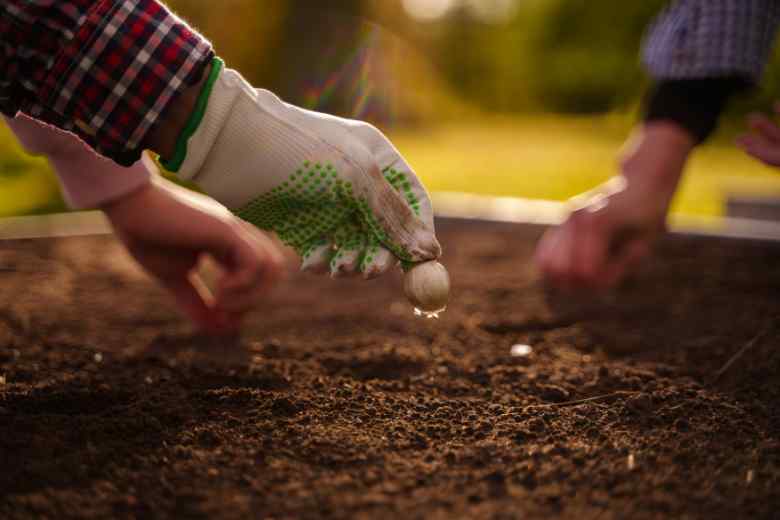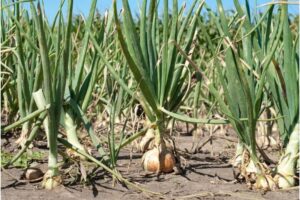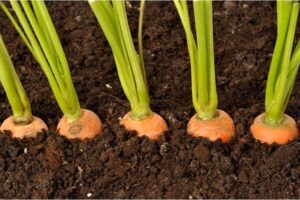
Garlic is an easy-to-grow crop in Tennessee, and it’s a great way to bring flavor to your meals. It’s an easy crop to grow in the home garden, and it’s also a valuable asset to any vegetable garden.
Planting garlic in Tennessee can be done from October through January, and it requires full sun and well-drained soil. Garlic can be planted in rows or in raised beds, and it’s best to plant the cloves 8-12 inches apart and in rows that are spaced apart by at least 8-12 inches.
Depending on the variety of garlic, harvest time can range from June to September, and during this time, the garlic bulbs can be harvested and used in a variety of ways. Planting garlic in Tennessee can be a rewarding experience, and it will bring flavor to your meals for years to come.
Types of Garlic Suitable for Tennessee
Here are some of the most suitable types of garlic for Tennessee:
1. ‘Hardneck’ Garlic Varieties:
These types of garlic are more suited for cooler climates, but many have proven to be adaptable to different growing conditions. They produce scapes (flower stalks) which can also be harvested and are very flavorful. A few examples include:
‘Rocambole’: Known for its excellent, rich flavor.
‘Purple Stripe’: They have a strong and robust flavor, often used in gourmet cooking.
‘Porcelain’: This variety has a powerful and robust flavor and stores well.
2. ‘Softneck’ Garlic Varieties:
These types of garlic are typically better for warmer climates, making them a good choice for Tennessee. They do not produce scapes, but they tend to store better and longer than hardneck varieties. Examples include:
‘Artichoke’: These have a milder flavor and are often what you find in supermarkets.
‘Silverskin’: Known for their long shelf life, these are often the last fresh garlic available before a new harvest.
3. ‘Elephant’ Garlic:
Technically not a true garlic, but a type of leek that has a mild garlic flavor. It is named for its large size. Elephant garlic prefers a longer, warmer growing season, so it may be a good choice for Tennessee.
Garlic is typically planted in the fall (October in Tennessee) and harvested the following summer. Be sure to prepare the soil with plenty of organic matter and provide good drainage. Mulch can also be beneficial to protect the garlic over the winter and to help maintain soil moisture during the growing season.
Keep in mind that garlic varieties can be somewhat flexible in their growing conditions, so it might be worth experimenting with a few different types to see what works best for you.
Preparing the Soil for Planting Garlic
Garlic is an incredibly versatile crop that can be easily grown in the home garden. Before planting garlic, it is important to prepare the soil in order to get the best possible results.
This includes loosening the soil, adding organic matter, and testing the soil pH. Loosening the soil will allow the garlic to spread its roots and absorb more nutrients.
Adding organic matter, such as compost, will help to improve the soil structure and increase its fertility. Lastly, testing the soil pH will ensure that the soil is not too acidic or alkaline, which can prevent the garlic from growing properly.
Following these steps will help to ensure a successful garlic harvest.
How to Plant Garlic in Tennessee
Step 1: Choose the Right Garlic Type:
Choose the variety of garlic you want to plant. As mentioned previously, both ‘hardneck’ and ‘softneck’ varieties can be grown in Tennessee, with ‘softneck’ varieties being more suited to warmer climates.
Step 2: Source Your Garlic:
You can buy garlic bulbs from a local nursery or online. Do not use garlic from the grocery store as these may be treated to prevent sprouting.
Step 3: Break Up the Garlic Bulbs:
Separate the garlic bulbs into individual cloves right before planting. Be careful not to damage the base of the cloves, as that’s where the roots will develop.
Step 4: Soil Preparation:
Garlic prefers well-draining soil. Incorporate organic matter such as compost or well-rotted manure into your soil. This will help improve soil fertility and drainage.
Step 5: Planting:
Plant each clove about 2 inches deep and 6-8 inches apart, with the pointy end facing upwards. Rows should be about 1-2 feet apart.
Step 6: Watering:
After planting, water the garlic well. You’ll want to keep the soil moist but not waterlogged.
Step 7: Mulching:
After the ground freezes, apply 3-5 inches of organic mulch (straw, shredded leaves, or grass clippings) over the planting area to help protect the garlic over the winter.
Step 8: Care during Growth:
In the spring, as the garlic starts to grow, you can add a nitrogen-based fertilizer to help boost its growth. Keep the area weed-free.
Step 9. Harvesting:
Garlic is typically ready to harvest in mid to late summer (around July in Tennessee). The leaves will start to brown and fall over when it’s time to harvest.
Remember, each clove will produce a new bulb, so you can start with a few bulbs and end up with a plentiful harvest. Enjoy your garlic planting in Tennessee!
Caring for Garlic in Tennessee
“Tennessee is home to many wonderful ingredients, and garlic is no exception. Whether you are a novice or an experienced gardener, learning how to care for garlic in Tennessee properly is essential for a successful harvest.
The key to successful garlic growing in Tennessee is to provide the right amount of sunlight, soil, and water.
Make sure to plant your garlic in an area that gets at least 8 hours of sunlight a day and the soil should be well-drained, fertile, and loose. Water your garlic regularly and use mulch and compost to retain moisture and prevent weeds.
With the right care and attention, you can enjoy the delicious taste of homegrown garlic in Tennessee all year round!”
Harvesting Garlic in Tennessee
Harvesting garlic in Tennessee is no easy task. It requires careful planning and preparation, from planting the garlic cloves to the time of the harvest.
The climate and soil of Tennessee make it an ideal environment for growing garlic, and the crop is highly valued for its flavor and nutritional benefits. It is important to understand the different stages of growth and the right time to harvest.
The cloves must be planted in the late fall, and then the bulbs should be harvested in late spring or early summer. Proper curing and storage techniques are essential to ensure a successful harvest. With knowledge and experience, harvesting garlic in Tennessee can be rewarding and enjoyable.
Frequently Asked Questions
What varieties of garlic are best for planting in Tennessee?
Answer: Hardneck garlic varieties are typically recommended for planting in Tennessee, as they are better suited to the climate. Popular varieties include Purple stripes, Porcelain, and Rocambole.
When is the best time to plant garlic in Tennessee?
Answer: The best time to plant garlic in Tennessee is in the fall, typically around October or November. This gives the garlic enough time to establish its roots before the cold winter months.
Is it necessary to fertilize garlic planted in Tennessee?
Answer: Yes, it is beneficial to fertilize garlic planted in Tennessee. A balanced fertilizer with an NPK ratio of 5-10-10 is recommended, as it will provide the garlic with the nutrients it needs to grow and produce healthy bulbs.
Conclusion
In conclusion, planting garlic in Tennessee can be a great way to add flavor and nutrition to your meals. It is easy to grow and can be harvested several times throughout the year. With the right timing, soil conditions, and care, you can enjoy a great garlic harvest in Tennessee.







